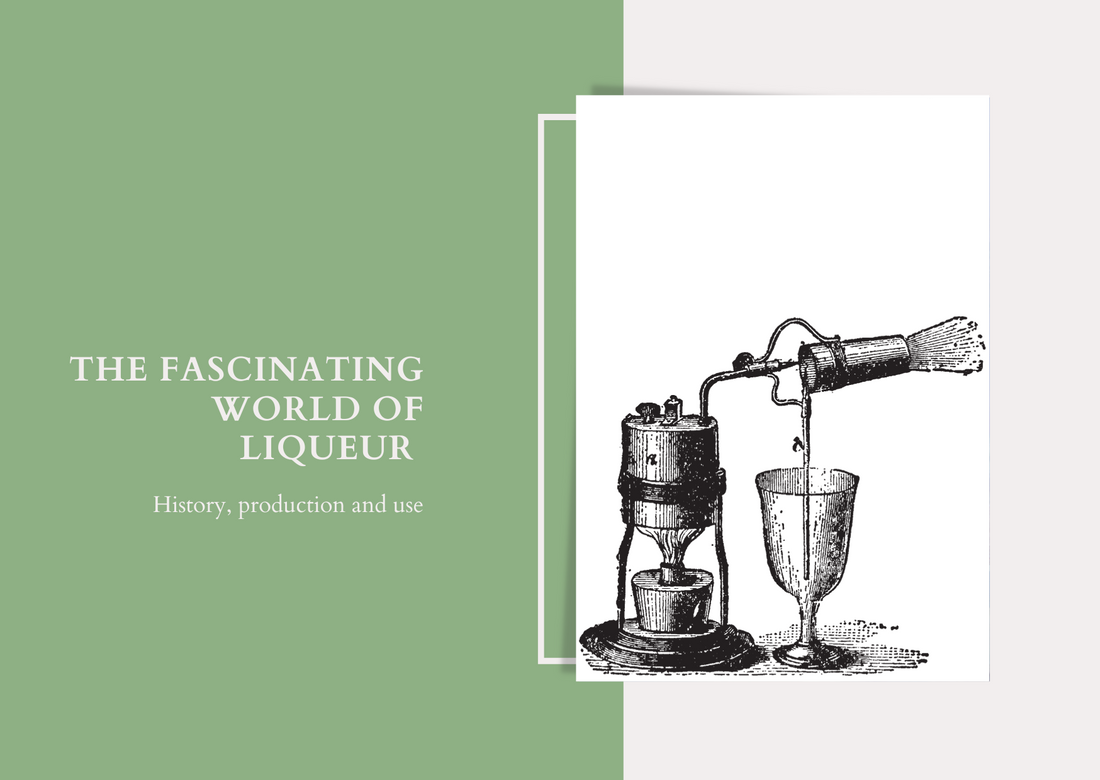Liqueur is more than just an alcoholic drink; it is a cultural phenomenon with a rich history. This versatile spirit can be used neat, as a base for cocktails and long drinks and in the kitchen. But what makes a liqueur and how does it differ from other types of alcohol? Let's delve into the fascinating world of liqueur together.
History of liqueur
The roots of liqueur go far back in history, to the time of the ancient civilizations of Mesopotamia and Egypt. In these early times, flavored alcohols were used as medicine or ritual drinks. But it was in the Middle Ages that liqueur took on its present form. Monks and alchemists experimented with various herbs, roots and spices to create healing elixirs. This often took place in secluded monasteries, where they also perfected the art of distillation.
Over the centuries, the meaning of liqueur changed. In the 17th and 18th centuries, it was increasingly regarded as a luxury drink. Nobles and wealthy citizens began to see it as a status symbol. This era gave rise to some of today's world-famous liqueur brands.
In the 19th and 20th centuries, industrialization further simplified liqueur production, allowing more people to enjoy a wide range of liqueurs. Today, liqueurs have become an integral part of social life and are used for a variety of occasions and in a wide range of cultures.
Production process
The production of liqueur is a complex process that is both a science and an art. The first step is to select the base alcohol. This can be neutral alcohol such as vodka or aromatic alcohol such as rum or brandy. The choice of base alcohol has a significant impact on the final product.
Distillation and maceration
Distillation is an important step in the production process. While some liqueur manufacturers buy alcohol that has already been distilled, many major brands distil their own alcohol. Distillation is followed by maceration, in which various flavors such as fruits, herbs or spices are added to the distilled alcohol. This process can take anywhere from a few days to several months, depending on the desired flavors.
Maturation and filtration
After maceration, the liqueur is often matured to refine the flavor. During this time, the flavors can meld together and develop a more complex taste. The final step before bottling is filtration, during which unwanted particles are removed.
Sugar and sweeteners
Another feature that distinguishes liqueurs from other spirits is the addition of sugar or other sweeteners. The amount and type of sugar can vary greatly, ranging from simple sugar to more complex sweeteners such as honey or agave syrup.
DIY liqueur
It is also possible to make your own liqueur at home. All you need is alcohol (e.g. vodka or rum), sugar and your chosen flavors. The mixture is then left to stand for a few weeks before being filtered and bottled.
Popular liqueur brands
There are numerous liqueur brands that are known worldwide. Some of the best known are Grand Marnier, Baileys and Amaretto. Each brand has its own specialties and unique flavors that make it special.
Have you ever tried the liqueur from Bazylia Liquor?
Uses of liqueur
Liqueurs are extremely versatile and can be used in a variety of recipes.
In cocktails
Cocktails such as the Margarita or the Long Island Iced Tea - nothing works without liqueur. In cocktail bars, it is virtually impossible to imagine life without liqueur.
In the kitchen
Liqueur is also used in various dishes, especially in desserts such as tiramisu or various types of sauces.
Conclusion
Liqueur is a versatile drink that should have a permanent place in every bar and kitchen. Whether you are a connoisseur or a newcomer to the world of liqueurs, there is always something new to discover and enjoy.
Discover the liqueur from Bazylia Liquor now!

